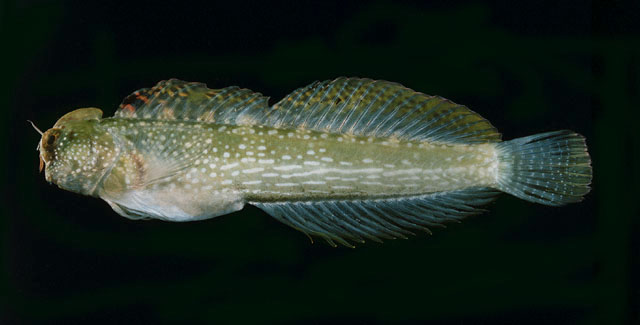| Blenniidae (Combtooth blennies), subfamily: Salariinae |
| 5 cm SL (male/unsexed) |
|
reef-associated; marine |
| Northwest Pacific: Wakayama Prefecture south to the Ryukyu Islands. |
|
Dorsal spines (total): 12-12; Dorsal soft rays (total): 19-20; Anal spines: 2-2; Anal soft rays: 17-18. Nasal and supraorbital cirri slender and pointed, nuchal cirrus shot and simple. Both sexes with low occipital crest. Breast and anterior part of dorsal fin with characteristic markings; breast with brownish-yellow spot; anterior dorsal fin with red spot. Anterior anal rays in males somewhat elongate. Attains 5 cm SL. |
| Adults occur in coral reefs (Ref. 559); common in the intertidal zone (Ref. 637). Oviparous. Eggs are demersal and adhesive (Ref. 205), and are attached to the substrate via a filamentous, adhesive pad or pedestal (Ref. 94114). Larvae are planktonic, often found in shallow, coastal waters (Ref. 94114). |
|
Least Concern (LC); Date assessed: 27 March 2009 Ref. (130435)
|
| harmless |
Source and more info: www.fishbase.org. For personal, classroom, and other internal use only. Not for publication.

